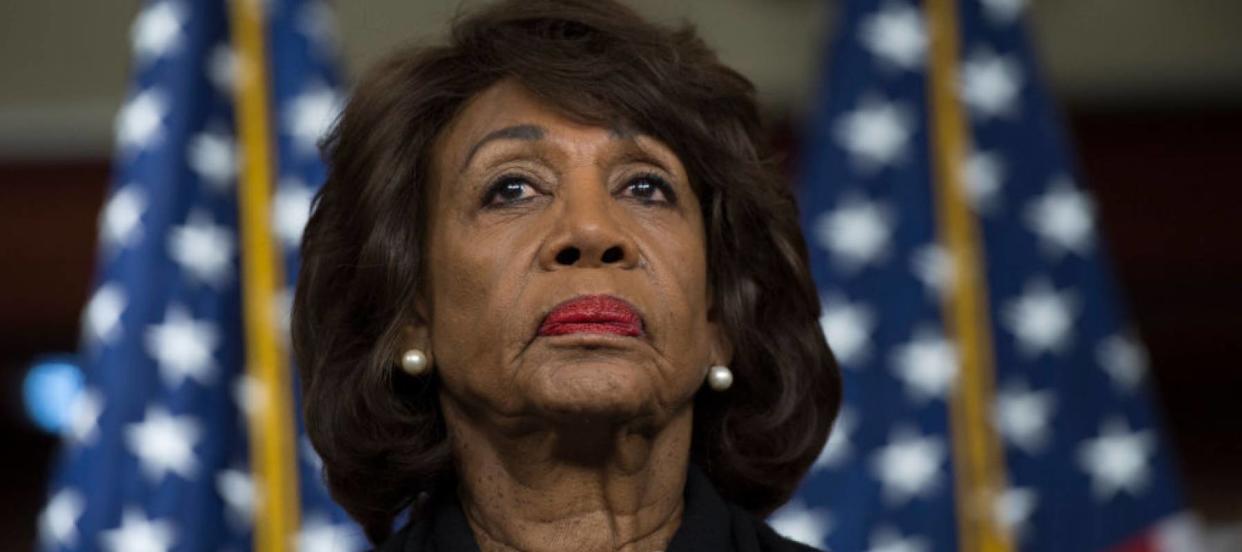Peter Schiff lambasts Maxine Waters for calling US housing the 'No.1 driver' of inflation — here's the real cause of America's cost-of-living crisis as per the famed investor. Is he right?

Inflation can arise from a multitude of factors, such as increased consumer spending, rising labor costs or energy prices, supply chain disruptions and monetary and fiscal policies. But according to Rep. Maxine Waters (D-CA), one factor stands out above all — housing.
Waters, the ranking member of the House Financial Services Committee, expressed her concerns during a recent committee hearing with Federal Reserve Chair Jerome Powell.
Don't miss
Commercial real estate has beaten the stock market for 25 years — but only the super rich could buy in. Here's how even ordinary investors can become the landlord of Walmart, Whole Foods or Kroger
Cost-of-living in America is still out of control — use these 3 'real assets' to protect your wealth today, no matter what the US Fed does or says
Anything can happen in 2024. Try these 5 easy money hacks to help you make and save thousands of dollars in the new year (they will only take seconds)
She noted that America is “not out of the woods yet” with regard to inflation and emphasized that housing “is still the number one driver of inflation.”
Peter Schiff, CEO and chief global strategist at Euro Pacific Capital, challenged Waters’ rationale.
“As usually @RepMaxineWaters is wrong. Housing is not the main driver of #inflation. Congressional deficit spending and #Fed money printing are the drivers,” he stated in a post on X. “Housing just goes along for the ride. However, misguided government housing policy also drives home prices and rents higher.”
Deficit spending and money printing
Deficit spending, where expenditures exceed revenue, is a widely recognized problem in the U.S.. In fiscal year 2023, which ended Sept. 30, the federal government spent $6.13 trillion and collected $4.44 trillion in revenue, resulting in a deficit of $1.7 trillion.
The trend has persisted into fiscal year 2024, with the federal budget deficit already surpassing $531 billion as of Jan. 31.
If the government increases spending without a corresponding increase in production, it can lead to demand-pull inflation. This occurs when the demand for goods and services exceeds supply, causing prices to rise.
Money printing can also cause inflation by increasing the amount of currency in circulation without a corresponding increase in goods and services. This excess money chases the same amount of products, leading to higher prices.
Read more: Generating 'passive income' through real estate is the biggest myth in investing — but here's 1 surefire way to do it with as little as $10
As part of its response to the economic fallout from the COVID-19 pandemic, the Fed implemented quantitative easing, which significantly increased the money supply.
To tame the subsequent inflation, the Fed has tightened monetary policy by raising interest rates and reducing its balance sheet.
Housing
While Schiff pinpointed two critical inflationary factors, Waters' perspective on housing inflation is not without merit.
According to the Bureau of Labor Statistics, the U.S. consumer price index increased 3.1% in January 2024 compared to a year ago. The so-called core CPI, which excludes volatile food and energy prices, rose 3.9% over the last 12 months.
Notably, the report showed that the shelter index increased by 6.0% in January compared to the same month a year ago, accounting for “over two thirds of the total 12-month increase” in core CPI.
More specifically, rent of primary residence increased by 6.1% year over year, while owners’ equivalent rent of residences rose by 6.2%.
It's worth pointing out here that there is a lag in the Fed's measure of housing market inflation, which even Powell has acknowledged. While Fed data says rent prices have been steadily rising, other analyses may show that rents are moving the opposite way.
Regardless, Powell recognized the housing market’s difficulties, describing it as “in a very challenging situation.”
“You have this longer run housing shortage, but at the same time you’ve got a bunch of things that have to do with the pandemic, and the inflation and our response with higher rates,” he elaborated.
A recent Realtor.com analysis indicates a shortfall of 7.2 million homes in America's housing supply.
The debate over housing affordability and the severe home shortage has also captivated social media audiences. For instance, TikTok influencer Mikey Taylor suggested that an annual income of $200,000 is necessary to rent a 790-square-foot unit in Los Angeles.
What to read next
Rich young Americans have lost confidence in the stock market — and are betting on these 3 assets instead. Get in now for strong long-term tailwinds
Don't let high car insurance rates drain your bank account — find how you can pay as little as $29 a month
Millions of Americans are in massive debt in the face of rising costs. Here's how to get your head above water ASAP
This article provides information only and should not be construed as advice. It is provided without warranty of any kind.
